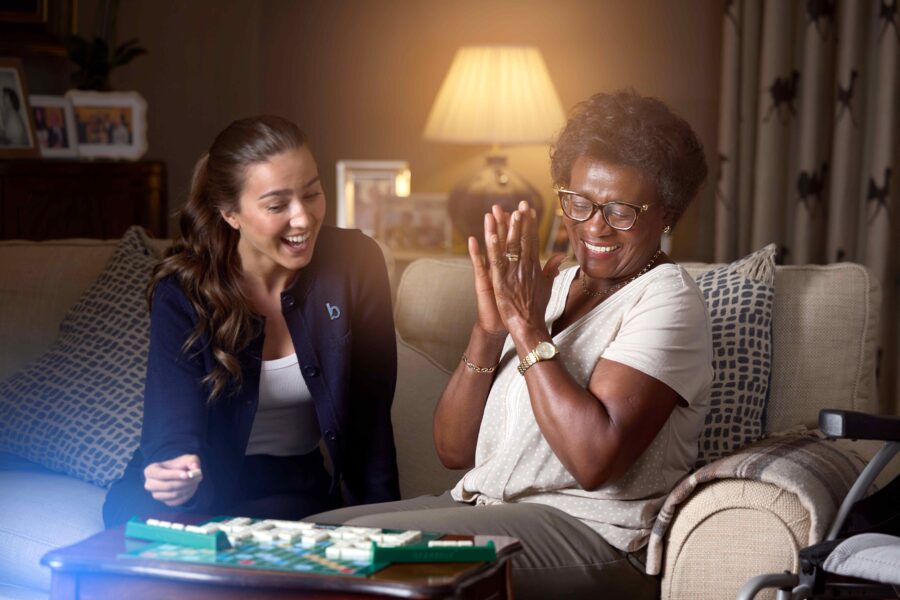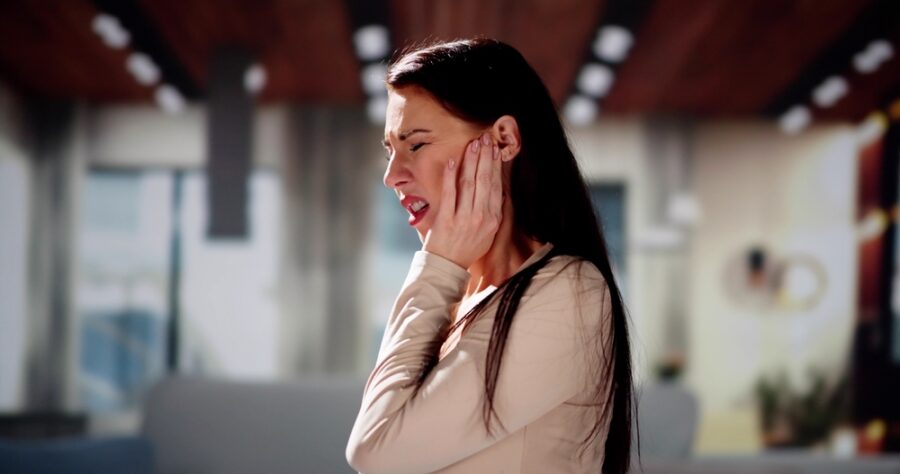

Blog post
How to protect your eyes from the sun
There’s more to protecting eyes from UV light than meets the eye!
As UV light isn’t just exclusive to summer, it’s crucial to understand how to protect your eyes from the harmful UV rays, particularly for individuals with cataracts (including those who have had cataract surgery), macular degeneration or retinal dystrophies.
What is UV light?
Ultraviolet light (UV light) is a type of radiation that is invisible to the naked eye.
Some UV light helps our bodies make vitamin D, but too much UV light can have harmful effects on our skin and eyes.
The sun gives off UV light as a natural part of its energy emissions. As the sun's energy travels through space, it reaches Earth in the form of sunlight. Sunlight consists of a spectrum of different wavelengths and UV light is just one portion of this spectrum.
It's important to note that the Earth's atmosphere plays a crucial role in filtering and absorbing much of the sun's UV radiation before it reaches the surface. This filtering effect is why we're protected from excessive UV exposure, but did you know that depletion to the ozone layer means it acts as less of a barrier?

How to protect your eyes from UV light
Sunglasses are more than a fashion statement – they’re essential to protect our eyes from harmful UV light.
Longer daylight hours and sunnier weather bring an increase in UV exposure from the sun. Overexposure to UV light has been linked to developing certain eye conditions such as cataracts and macular degeneration. Additionally, overexposure has been linked to both temporary and permanent sight loss.
Our eyes are more sensitive to UV light than our skin is, so actively safeguarding eyes from UV light is vital.
You don’t have to be looking directly at the sun for UV light to enter your eyes. Although, we strongly advise that you avoid looking directly at the sun as this can cause severe damage to the eye.
What can happen if my eyes are damaged by UV?
Accumulated ultraviolet (UV) damage can cause eye conditions such as pterygium.
Pterygium, which presents as a benign wing-shaped lesion, usually occurs on the inner corner of the eye. Doctors are recently seeing a number of double-headed pterygium cases, where the lesions appear on both the inner and outer corners of the eye, due to accumulated damage from high UV exposure.
A cataract is a cloudy eye growth more commonly seen in the elderly but may also develop earlier in life or progress more rapidly in people who spend a lot of time outdoors without adequate UV protection. If untreated, cataracts may lead to blindness.
The danger is that early signs of UV-related eye damage are often unnoticeable and can only be detected during a comprehensive eye examination by an eye healthcare professional.
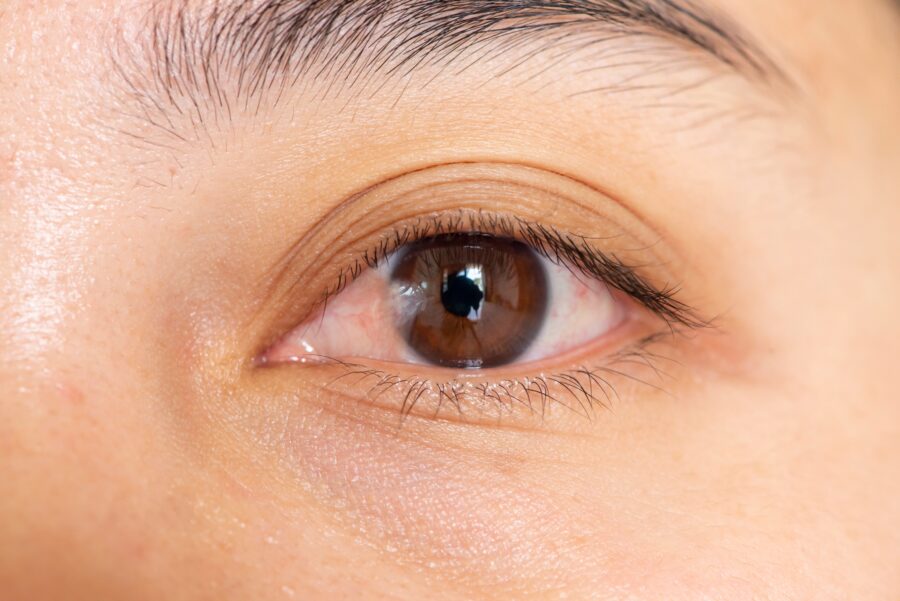
How to choose the best sunglasses
The easiest way to protect the eyes from UV damage is to choose the right eyewear and sunglasses and remember that not all sunglasses are made equal.
When buying sunglasses always look out for the CE, UV 400 or British Standard markings as they indicate a safe level of protection for your eyes.
Your sunglasses should be well-fitted, cover your eyes and sit close to the face. For example, wraparound frames would provide better protection than round framed sunglasses that sit further away from the face.
Due to differences in facial structures, the frame should also be adjusted for a comfortable fit to provide adequate coverage.
Lenses with darker tints do not necessarily offer more protection. Dark lenses which do not offer a sufficient UV protection can actually be more damaging because they cause the eye’s pupils to dilate (get bigger) and let in more harmful light. Meanwhile, lenses which can appear colourless can provide 100 per cent UV protection.
Scratches on UV-coated lens can also affect how well harmful UV rays are filtered.
While some contact lenses provide UV protection, they don’t cover your whole eye, so you still need sunglasses.
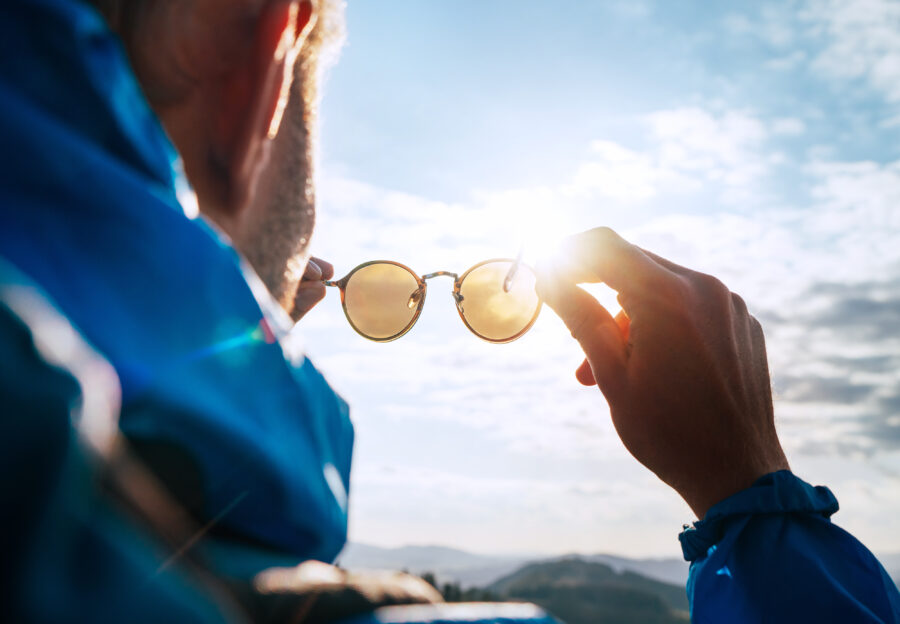
When should I wear my sunglasses?
Did you know that our eyes need protection from UV light even when the sun isn’t out?
Your eyes need protection from the sun all year round, even on cloudy days. Cloud cover only reduces the amount of UV light by 10%.
In the evenings and mornings, we also get more light from reflective surfaces like roads. Because UV is found in the invisible part of the light spectrum, we can’t see it or feel it.
Sunglasses can also protect your eyes from UV light in ‘high glare areas’ such as near snow or water.
Do children need sunglasses?
We do recommend that children wear sunglasses.
Up to 80% of the eye’s lifetime exposure to UV light is reached before the age of 18, which makes UV protection particularly important in childhood.
Because children’s eyes have larger pupils and clearer lenses, they are more susceptible to sun damage.
Plus, despite children generally spending more time outdoors than adults, 70% of them still don’t wear sunglasses in the UK.
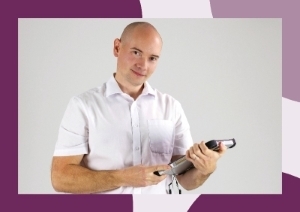
The insights and expertise shared in this article are brought to you by...
Matthew Burford BSc(Hons) Optometry MCOptom, Professional Services Manager at OutsideClinic
Matthew graduated from Aston University in 2004 before finding his passion for domiciliary eye care and joining OutsideClinic in 2005.









